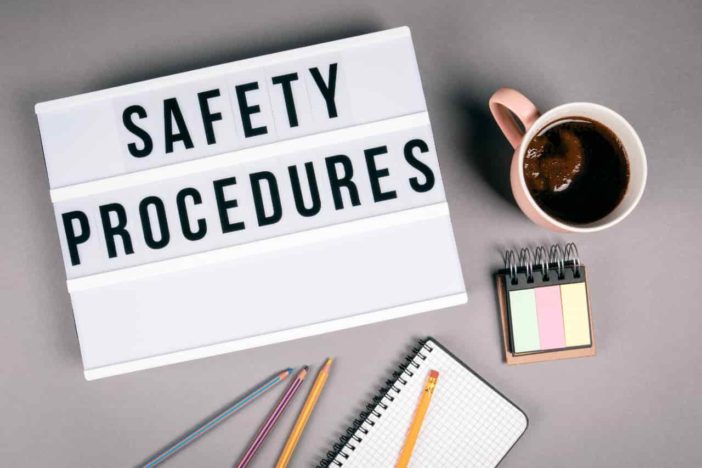In any workplace, it’s essential to have policies and protocols in place to protect workers and the public from hazards. Workplace safety protocols are designed to prioritize the health and safety of the workforce, ensuring safety is not being compromised in favor of other priorities. A safe workplace will also likely be more productive.
Although every work environment has them, safety protocols are where some businesses and work settings run into trouble. Employers have plenty of health and safety rights they need to follow. There are also health and safety rights that employees are expected to uphold as well. Your staff should never feel like their safety isn’t prioritized in the workplace.
Here are some best practices on how to enforce workplace safety protocols:
1. Hold Regular Safety Meetings
When a team meets to discuss safety, it’s an opportunity to bring up hazards, serve reminders, and continually reprioritize health and safety standards as well as workplace safety protocols. If employees feel unsafe, it’s also a chance to either come forward or have the topic submitted anonymously and then discussed in this group setting. In any high-hazard environment, regular safety meetings are a must. Whether they happen daily or weekly is up to the site.
2. Put Up Signage & Safety Reminders
You want to avoid the possibility of an accident occurring when it could have been entirely avoided with a sign. Put up signage. Ensure simple safety instructions are visible. This includes labeling such as with the WHMIS system.
Have safety reminders appear in the routine work environment. If someone who is inexperienced but trained is in the workplace, this signage will serve as a reminder that instructs them on how to conduct themselves.
3. Engage In WHMIS Training
People underrate the importance of WHMIS training. In any work environment, you may be working with chemicals that require some training in how to use them and safely store them. WHMIS training is simple and should be provided to every employee entering the workplace.
This should be a part of their initial training. It can even be refreshed on an annual or semi-annual basis in accordance with what you feel is most appropriate for your company.
4. Identify Hazards
If there is a safer way to do something, take action to make it a reality. If an employee comes to their employer with an identified hazard. this is something that should be followed. Workplace safety is not worth a thing if it isn’t something actively prioritized and pursued. Eliminate hazards as they come up, reducing the likelihood of a serious accident occurring on the job.
5. Maintain The Right to Refuse Unsafe Work
It’s an employee’s right to refuse any work they feel is unsafe for them. Do not attempt to put down this right or refuse it. Employees should be rewarded and acknowledged positively when they come to you with knowledge of a safety violation. Said violation should also be addressed swiftly.
Work may even be paused until the health and safety issue is fully dealt with. When employees feel like you have their back, it will be easier to enforce workplace safety protocols.
6. Update and Maintain Equipment
You can have the safest workers in the business. However, if their tools and equipment aren’t working properly, that could form an immediate hazard. As an employer, it’s your job to keep heavy equipment and machinery maintained and provide safe tools to your workers.
Any faulty equipment should be eliminated. Furthermore, there should be planning in place to guarantee that these assets are maintained on an ongoing basis.
7. Reinforce the Wearing of Safety Gear
It’s not enough to have health and safety gear available. It must be worn and used correctly. Reinforce how important it is to wear protective gear. Use PPE in the workplace and wear it appropriately, secured in the right way, and safely installed on a wearer to avoid creating another hazard. When there is gear that is worn through or unavailable, work shouldn’t be continued without it.
8. Screen Employees for Possible Safety Issues
If an employee is under the influence of alcohol or drug substances, they shouldn’t be in the workplace. Furthermore, an employee not following workplace safety protocols should be escorted away from the work floor. In workplace safety, everyone is an actor. A single violation is rarely contained to a single individual, which means others can be put at risk from one person’s decision to be unsafe.





